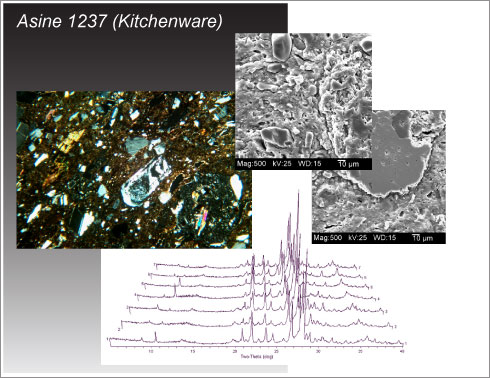Correlation of Physical Properties for Aeginetan Ware with Compositional and Chemical Data from the Clay Source Deposit
Shriner, C1, Douglas, B1, Elswick, E1, Brophy, J1, Christidis, G2 and Murray, H1
1Dept. of Geological Sciences, Indiana University, Bloomington, IN
2Dept. of Mineral Resources Engineering, Technical University of Crete, Greece
ABSTRACT: Aeginetan Ware, distributed in large numbers throughout the Aegean Complex, was produced in two fabrics, fine and coarse. In a pivotal 150 year period (2150-2000 BC), coarse ware production began to be more visible, and abruptly became dominant at the beginning of the Middle Helladic (2000-1650 BC). It has been established that a single, extensive Early Pliocene volcanic ash horizon, altered to clay, was utilized for ceramic production. Clay mineralogical and chemical data (major and trace elements) for the deposit and for fine and coarse sherd material have been collected. To answer the fundamental question of ceramic function a series of physical property tests were conducted (e.g. MOR, Young’s Modulus) on raw material, prepared using different handling and firing techniques. Comparable measurements were made on sherd material. Spatial and temporal correlations between ceramic type and physical properties allow conclusions to be reached regarding ceramic processing and application. |

